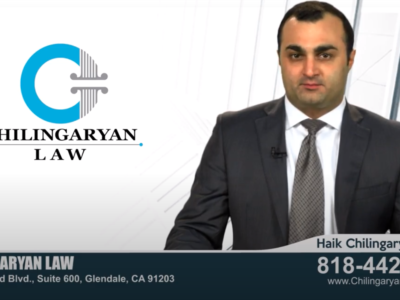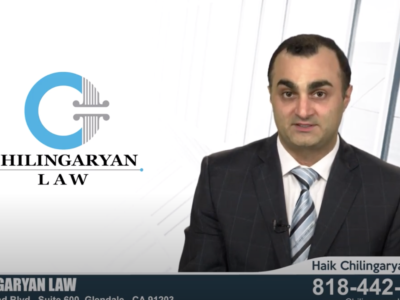
Sell Your Property And Pay Taxes Later
What Are Like-Kind Exchanges?
In the event that an investor should be involved with a sale or exchange of real estate, it is critical to understand the benefits and scope of “Like-Kind Exchanges.” Generally, the sale and exchange of property is a taxable event. However, under Section 1031 of the Internal Revenue Code, an investor may qualify for the taxable gain from the exchange to be deferred indefinitely.
Prior to the passage of the “Tax Cuts and Jobs Act of 2017” (otherwise known as the GOP Tax Plan or the Tax Reform Bill), both personal property and real property exchanges were granted the tax-deferred treatment. The new law now limits the deferral treatment for exchanges involving only real estate transactions.
The scope of permissible tax-deferred exchanges is very broad, including the exchange of an apartment building for a vacant lot. However, like-kind exchanges generally do not apply to primary residences and vacation homes. They only apply to exchanges of real property held for the purpose of investment or for productivity use or used in a trade or business. In addition, the property received in the exchange must also be held for the same or similar purpose. Our firm can help an investor decide whether a like-kind exchange is suitable to his or her circumstances.
Why Are Like-Kind Exchanges Beneficial To Investors?
Upon selling or exchanging property, the investor is required to pay capital gain taxes. However, Section 1031 allows the taxpayer to not pay the tax to the extent of the gain that would otherwise be recognized from the sale or exchange, thereby deferring the gain to a later time, possibly until death. Upon death, the property will receive a step-up in basis.
Let’s assume the following circumstances: the investor’s adjusted basis in the property is $100,000 and the purchase price is also $100,000. The property has now appreciated to the fair market value of $200,000. If the investor chooses to sell the property outright, he would be required to pay capital gain taxes. Assuming the investor is in the highest tax bracket, he must pay 20% or $20,000 of capital gain taxes. The Capital Gains would be measured by the $100,000 gain, which represents the selling price of $200,000 minus the adjusted basis of $100,000.
These calculations do not take into account any additional income taxes and state taxes the investor may be required to otherwise pay after the sale. In essence, the investor would now have at most $180,000 (instead of $200,000) to acquire any subsequent properties.
Let’s now assume that instead of selling the property, the investor engages in a tax-deferred exchange. If the investor acquires the second property in a like-kind exchange for $200,000, the investor effectively acquires a property that is worth $100,000 more than the purchase price of his original property. Since both properties currently have the fair market value of $200,000, the investor does not pay any capital gain taxes, which would otherwise amount to $20,000. Therefore, the investor may acquire the new property in a like-kind exchange that is potentially of higher value than the purchase price of the first property, not pay income tax, and earn a larger return than he would have had he sold the property.
If the investor should choose to later sell any property that is traceable to the original transaction, the capital gain taxes would apply based on the adjusted basis of the first property that was sold in the original transaction. This is because the original adjusted basis is carried over to the subsequent set of property exchanges. In the example above, the adjusted basis of $100,000 would be carried over if the investor chose to sell the property before his death.
If after completing five like-kind exchanges, the fifth property is sold for $300,000, the investor must recognize the gain of $200,000, which represents the selling price of $300,000 minus the adjusted basis of $100,000 from the first transaction. However, if the property is not sold while the investor is alive, the investor may potentially engage in an unlimited number of exchanges throughout his or her lifetime. Upon the investor’s death, the property will receive a step-up in basis, ie., the person inheriting the property will inherit the fair market value of the property at the time of the investor’s death as the new basis in the property.
How Can The Investor Qualify For A Like-Kind Exchange?
Generally, the investor must relinquish all of the rights in the original property (“relinquished property”) by transferring it to a third party, such as by placing it in a qualified escrow or by retaining a qualified intermediary. In return, the third-party must acquire the proceeds from the sale and use those proceeds to purchase the new property (“replacement property”). Additionally, the replacement property must be identified within 45 days of selling the relinquished property. The IRS sets out a safe-harbor period in order to receive the deferral treatment, however, the replacement property must generally be purchased within the earlier of 180 days of the sale of the original property or when the investor’s tax returns are due.
Important Note: Chilingaryan Law or its affiliates are not rendering legal or tax advice by providing the content above. No attorney-client relationship is formed based on the information provided above. The above content is designated only for educational use. Accordingly, Chilingaryan Law assumes no liability whatsoever in reliance to its use. Additionally, certain changes in law may have an effect on the legality of the information provided above, and certain circumstances of the reader may vary the applicability of the above content to his or her situation.



